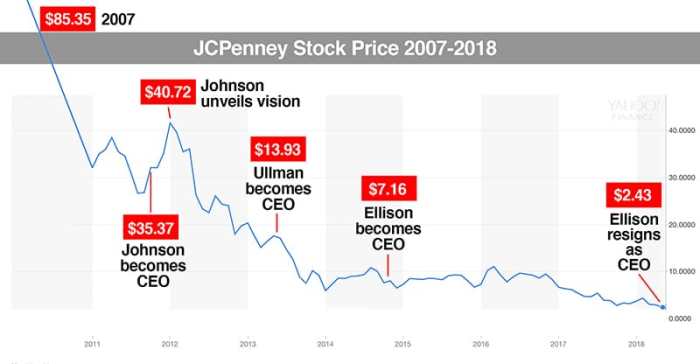
Both sides of the often rancorous abortion debate, with all its fierce moral complexity, should be pleased.
Embracing former President Bill Clinton’s dictum that abortions should be “safe, legal, and rare,” Oregon has steadfastly protected the right to an abortion, becoming one of the first states to legalize abortion (SB 193) in 1969.
Oregon ‘s law legalized abortion during the first 150 days of pregnancy, allowing a licensed physician to perform an abortion on an Oregon resident in the following circumstances:
- The baby has a physical or mental handicap
- The baby was conceived by rape or other criminal intercourse
- The pregnancy poses a substantial risk to the mother’s physical or mental health.
The law also required all abortions to be performed by a physician and in a hospital. Before any abortion took place, two physicians had to certify in writing that the woman’s circumstances justified the abortion.
Oregon’s most recent effort to protect access to abortions was the resounding defeat in November 2018 of Ballot Measure 106, a proposed constitutional amendment that would have barred the use of public funds to pay for abortions, affecting government employees and people on Medicaid.
After nationwide legalization of abortion in 1973 with the U.S. Supreme Court’s Roe v. Wade decision, the total number, rate (number of abortions per 1,000 women aged 15–44 years), and ratio (number of abortions per 1,000 live births) of reported induced legal abortions across Oregon and the U.S. increased rapidly.
Abortions in the U.S. reached their highest level in 1990 at 1,429,247, before decreasing at a generally steady pace. The U.S. abortion ratio increased from 196 in 1973 to 358 in 1979 and then stayed nearly stable through 1981. The ratio peaked at 364 per 1,000 in 1984 and has generally declined since then.
The incidence of abortion has varied considerably, however, across subpopulations and remains higher in some demographic groups than others. Economically disadvantaged women, for example, make up a significant and increasing portion of abortion patients.
Collecting abortion data
There is no national requirement for abortion data reporting. That leaves the collection of abortion data in the United States too a voluntary system operated principally by the U.S. Centers for Disease Control (CDC) and the Guttmacher Institute, a nonprofit research organization that supports legal abortion.
The CDC’s data collection process is neither as expansive or rigorous as Guttmacher’s.
The CDC began abortion surveillance in 1969 to document the number and characteristics of women obtaining legal induced abortions.
The CDC gathers information submitted voluntarily by states and reporting areas (New York City and the District of Columbia) that conduct abortion surveillance.
However, not all states regularly report abortion data to the CDC. The CDC’s “Abortion Surveillance — United States, 2015” report, for example, includes only data that were provided by the central health agencies of 49 reporting areas (the District of Columbia, New York City and 47 states). It does not include data on abortions in California, Maryland, and New Hampshire.
Guttmacher’s data gathering process is more comprehensive. Surveys are mailed to the “known universe” of abortion providers, including potential new providers the Institute identifies.
This is followed by multiple mailings, phone calls, faxes, and emails to providers that don’t respond. Guttmacher also makes estimates based on state health department data and reasonable projections from other sources of data.
The different methodologies consistently result in different numbers. For example, according to the CDC, 8,794 induced legal abortions were performed in Oregon in 1974, the first year after Roe v. Wade. Guttmacher, on the other hand, figured there were 13,390 that year.
Behavioral changes with respect to induced abortion over time are better understood , however, more by shifts in abortion rates (abortions per 1000 women ages 15-44), which account for population change, then by changes in the number of abortions.
Using CDC data, Oregon’s abortion rates were 20.0 in 2000, 13.2 in 2010, and 10.9 in 2015. Guttmacher, on the other hand, used different data to put Oregon’s abortion rates at 23.53 in 2000, 14.59 in 2010 and 12.45 in 2015.
In any case, the abortion data cited for Oregon in any given year by both the CDC and Guttmacher are not the actual number of Oregon women who had abortions. That’s because not all abortions that occur in Oregon are provided to state residents. Some patients may have traveled from other states; likewise, some individuals from Oregon may have traveled to another state for an abortion.
According to CDC data, about 11.2 percent of abortions in Oregon in 2015 were for out-of-state residents.
Abortions may be performed for non-residents for a variety of reasons, including easier access to services in Oregon than in neighboring states or more restrictive rules in other states.
Abortion is legal in Idaho, for example, but there are restrictions such as state-directed counseling intended to discourage women from having abortions, a 24-hour waiting period and a requirement for parental consent if the patient is a minor. Other abortions may be performed on women who live in Northern California, for example, and find it more convenient to access a Southern Oregon facility.
Still, the data provide a window into the overall trends and demographics of who is seeking abortions.
Data on the number of induced legal abortions in Oregon, compiled by the CDC and the Guttmacher Institute since 1973, are as follows:
Induced legal abortions in Oregon |
Year | CDC Data | Guttmacher Data |
| | |
1973 | 7,447 | 11,440 |
1974 | 8,794 | 13,390 |
1975 | 10,641 | 13,270 |
1976 | 12,590 | 12,820 |
1977 | 13,163 | 15,050 |
1978 | 13,605 | 14,450 |
1979 | 14,501 | 17,690 |
1980 | 15,735 | 17,670 |
1981 | 14,799 | 15,990 |
1982 | 12,807 | 16,350 |
1983 | 12,064 | N/A |
1984 | 13,133 | 15,310 |
1985 | 12,056 | 15,230 |
1986 | 11,217 | N/A |
1987 | 11,147 | 14,370 |
1988 | 13,309 | 15,960 |
1989 | 13,928 | N/A |
1990 | 13,658 | N/A |
1991 | 14,310 | 16,580 |
1992 | 12,685 | 16,060 |
1993 | 12,961 | N/A |
1994 | 13,392 | N/A |
1995 | 14,079 | 15,5909 |
1996 | 13,767 | 15,050 |
1997 | 14,834 | N/A |
1998 | 14,344 | N/A |
1999 | 14,145 | 16,700 |
2000 | 13,658 | 17,010 |
2001 | 14,272 | N/A |
2002 | 13,172 | N/A |
2003 | 12,622 | N/A |
2004 | 11,443 | 13,320 |
2005 | 11,602 | 13,200 |
2006 | 11,732 | 12,246 |
2007 | 11,883 | 13,370 |
2008 | 10,610 | 12,920 |
2009 | 10,801 | 10,801 |
2010 | 9,990 | 11,010 |
2011 | 9,567 | 10,690 |
2012 | 9,016 | N/A |
2013 | 8,287 | 9,130 |
2014 | 8,231 | 9,330 |
2015 | 8,610 | N/A |
Recent abortion data
In 2015, the most recent year for which the CDC has submitted a “Abortion Surveillance — United States” report, the abortion rate (abortions per 1000 women ages 15-44) in Oregon decreased across all age groups.
Women in their 20s accounted for 57.2% of all Oregon abortions in 2015, women in their 30s for 28.1%. The CDC reported 922 abortions by adolescents (age 19 and below) in Oregon in 2015.; 56 of those abortions (6.1% of the total) were by children below the age of 16.
The CDC also reported the following with respect to abortions in Oregon in 2015:
- 9% were performed during, or before, the 13th week of gestation.
- 7% were performed during, or after, the 21stweek of gestation.
- 39% were performed as medical (nonsurgical) abortions (up from 14% in 2005).
- 19% of abortions were performed on married women; 81% on unmarried women.
- Abortions by known race/ethnicity of women in Oregon in 2015 were: Non-Hispanic white – 70.8%; Non-Hispanic Black – 6%; Non-Hispanic Other – 10%; Hispanic: 13.2%.
As for the safety of abortions, the CDC calculated the number of deaths and case-fatality rates per 100,000 legal abortions for abortion-related deaths by type of abortion during 1973–2014.
In 1973, the year of the Roe v. Wade decision, there were 47 deaths associated with abortions in the U.S., according to the CDC., with 25 from legal induced abortions, 19 from illegal induced abortions and 3 in cases where it is unknown whether the abortion was induced or spontaneous.
The CDC defines an abortion as legal if it was performed by a licensed clinician within the limits of state law. An abortion is defined as illegal if it was performed by any person other than a licensed clinician.
During 1973-1977, 149 abortion-related deaths were reported to the CDC, a rate of 2.09 deaths per 100,000 legal abortions.
The number of deaths and case-fatality rates have since dropped significantly.
In 2014, there were 6 deaths associated with abortions in the U.S., according to the CDC., all in connection with legal induced abortions, and the rate of deaths per 100,000 legal abortions declined to .79 during 2008-2014.
Why fewer abortions?
While the reduction in abortions in the United States and Oregon over time is a settled matter, the reasons for the decline are not.
There are a multitude of possible explanations for the decline.
The onslaught of state laws intended to make abortion a more difficult choice may be one reason.
For example, according to the National Right to Life Committee Inc., five states (Kentucky, Louisiana, North Carolina, Texas and Wisconsin) require that an ultrasound be performed prior to an abortion. The screen must be displayed so the mother can view it and a description of the image of the unborn child must be given. “Providing a ‘window to the womb,’ ultrasound images give a mother the unique opportunity to see her living unborn child in ‘real time.’,” the Committee said in a Jan. 2018 report.
Kristi Hamrick, a spokesperson for Americans United for Life, believes new laws requiring ultrasounds have been “game-changers” in reducing abortions.
The adoption by some states of informed consent requirements pushed by anti-abortion activists is another example of state actions that may be dissuading some women from abortions. Twenty-seven states now have informed consent laws in place.
In 1989, Pennsylvania amended its Abortion Control Act to require:
- the person undergoing the abortion to give informed consent and receive mandatory counseling, including alternatives to abortion.
- a 24-hour waiting period between the counseling appointment and the procedure itself.
- parental consent for minors, with available judicial bypass.
- a spousal notification requirement.
- reporting requirements for providers.
The state’s Planned Parenthood association challenged the statute, but the U.S. Supreme Court, in a 5-4 decision (Planned Parenthood v. Casey, 505 U.S. 833 (1992)), held that the standard for whether a state could enact a restriction to abortion access was whether that restriction placed an “undue burden” on the person seeking the abortion. The Court ruled that only the spousal notification requirement was an undue burden.
Michigan’s Republican-led House took a step to discourage abortion on Dec. 13 when it approved a bill that would permanently prohibit doctors from using an Internet web camera to prescribe medication to induce an abortion. Right to Life of Michigan pushed for the measure, according to the Detroit News.
Supporters said the bill, which is headed to Gov. Rick Snyder’s desk, is a safety measure for medication that can have side effects. Critics say the regulation is designed to limit access to legal abortions, particularly for women who live in rural areas without a doctor nearby and who increasingly rely on Internet exams.
In another case, Mississippi ‘s Democratic attorney general filed a notice of appeal Dec. 17 supporting a Mississippi law that would ban most abortions after 15 weeks. U.S. District Judge Carlton Reeves issued a temporary injunction in March 2018 to prevent the state from enforcing the law. and then a more extensive ruling on Nov. 20, 2018 finding that the law “unequivocally” violates women’s constitutional rights. , Mississippi ‘s attorney general Hood plans to ask the 5th U.S. Circuit Court of Appeals to overturn Reeves’ decision about the constitutionality of the law
It’s also possible that fewer women are having abortions because they may want an abortion but can’t easily access a distant clinic.
In Mississippi, for example, there is only one abortion clinic, run by the Jackson Women’s Health Organization (JWHO). Its state-licensed facility is in Jackson, Mississippi’s capital.
In large areas of Eastern Oregon and some parts of the Southern Oregon coast it’s 90-180 miles to a clinic, according to a Guttmacher analysis. “Traveling long distances can impose a substantial burden on women with respect to transportation costs, travel duration, time off work, and arrangement of childcare, particularly for women who are economically disadvantaged,” The Lancet, a public health journal, reported.
The strongest reason fewer women are having abortions is likely because the effective use of contraceptives, including long-acting reversible contraceptives (or LARCs) like IUDs and implants, is resulting in fewer unwanted pregnancies.
And then there are serious efforts underway to develop better contraceptives for men. The Seattle Times just reported, for example, that University of Washington researchers are working with Seattle-area couples to test a contraceptive gel for men. The gel works by reducing sperm production when applied daily on the upper arms or shoulders. Early trials are also underway at the the University on a pill for men that reduces levels of testosterone and other hormones responsible for sperm production.
Some abortion opponents see other factors at work in the declining abortion numbers.
Hamrick believes abortion numbers are also going down because public sentiment is turning against abortion.
The Pew Research Center says, however, that as of 2018, public support for legal abortion remains as high as it has been in two decades of polling. Currently, 58% say abortion should be legal in all or most cases, while 37% say it should be illegal in all or most cases, Pew reported in Oct. 2018.
But the public’s views on abortion are not absolutist. According to the Pew report, more than half of the U.S. says that in most – but not all – cases, abortion should be legal (34%) or illegal (22%). Fewer take the position that in all cases abortion should be either legal (25%) or illegal (15%).
Challenging the numbers
It’s also possible, of course, that the decline in the number of reported abortions is a mirage, that the data is inadequate and unreliable.
One outspoken critic of current data is the Charlotte Lozier Institute, which says its goal “…is to promote deeper public understanding of the value of human life, motherhood, and fatherhood, and to identify policies and practices that will protect life…”
“An examination of state and federal reporting policies makes clear…that the system now in place is poorly suited to determine whether or not, in fact, abortion is becoming significantly less frequent and to what degree, especially in year-over-year comparisons where published data is delayed, non-existent, or available only from a single source with a history of close ties to the industry itself,” Charles Donovan and Nora Sullivan wrote in a Lozier Institute article.
It’s also possible that the decline in the abortions numbers is due to the ease of self-administered, and unreported, medical abortions.
Medical abortion is not the same as emergency contraception, or the morning-after pill. Emergency contraception prevents a pregnancy. Medical abortion is used to terminate an unwanted pregnancy.
The FDA-approved regimen for medication abortion consists of two medications available by prescription: mifepristone, which works by blocking progesterone (a hormone needed for a pregnancy to continue); and misoprostol, taken 24–48 hours later, which induces contractions and ends the pregnancy.
According to the CDC, reported medication abortions are becoming increasingly common, growing from 11.3% of all abortions in 2006 to 24.2% in 2015.
Guttmacher says that with safe and effective models for self-managed abortion care now in place, some women, including those who distrust the medical system, may be opting to self-manage an abortion for increased privacy and autonomy and, quite reasonably, not reporting their actions..
Some medical abortions may also not be reported because they are done illegally by non-physician health care providers in states that require abortions to be performed only by physicians. In such cases, non-physicians risk prosecution and penalties under the law, so there is more motivation to conceal than to report.
Then there’s the availability of medical abortion drugs online. The Atlantic reported in October on the launch of an online service started by a doctor based outside the U.S. called Aid Access that screens women for their eligibility to take medical abortion drugs and then ships the drugs to an approved customer. It’s unlikely the users of this service submit reports to state health agencies.
What’s next?
Whatever the national attitudes, Oregon is likely to continue to be a welcoming state for abortions. The total number and the rate of abortions may still, however, come down, particularly because of the use of better contraceptives.
Some other states will continue their efforts to keep the abortion numbers and rates down through restrictive measures.
A July 2018 report by Guttmacher said 29 states already had enough abortion restrictions in effect to be considered either hostile or extremely hostile to abortion rights; four states in the “extremely hostile” category also had so-called “trigger” laws on the books that would immediately ban abortion if Roe v. Wade were overturned.
Many state legislators are continuing their efforts to further restrict reproductive rights or access to care.. “In the first six months of 2018, 11 states enacted 22 new abortion restrictions and four states moved to impose new restrictions on providers that can receive public funds for family planning programs,” the Guttmacher report said.
And the beat goes on.






